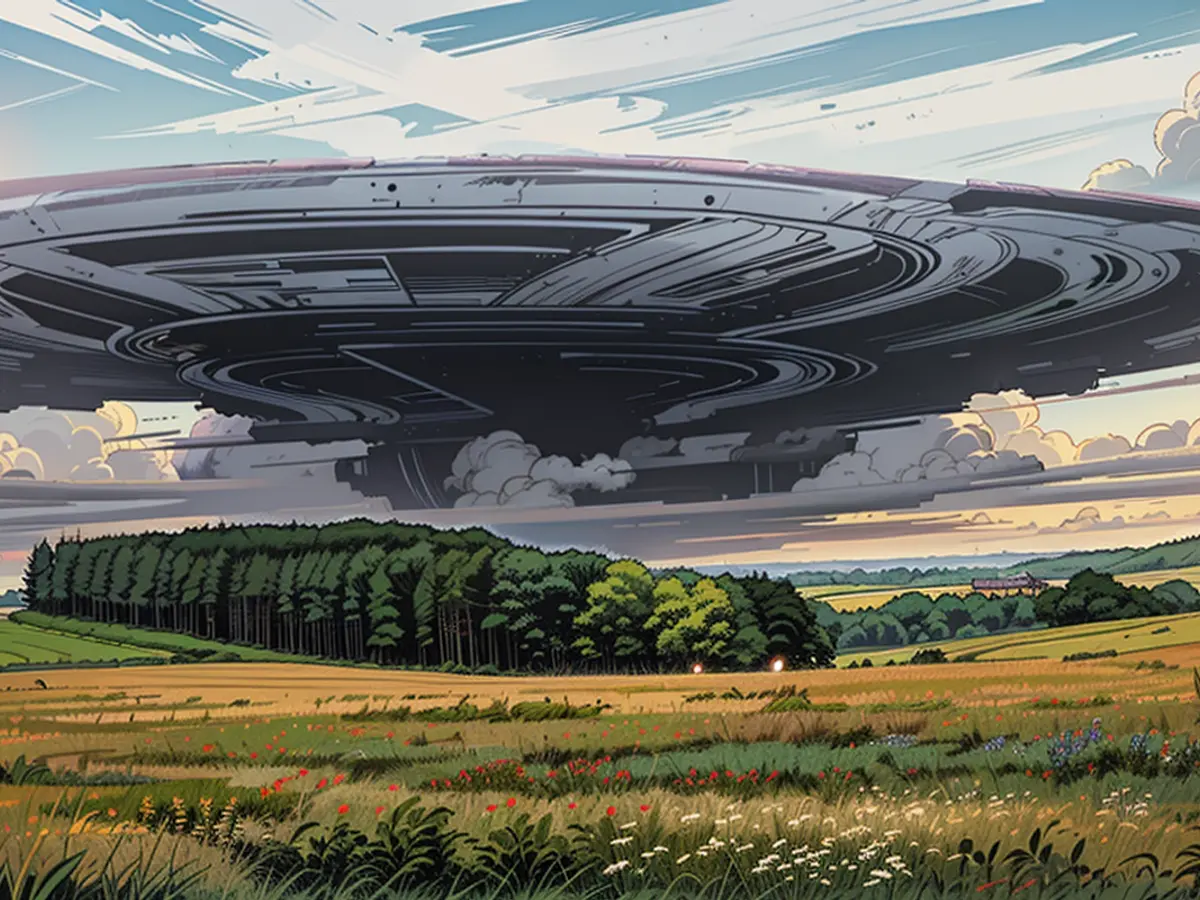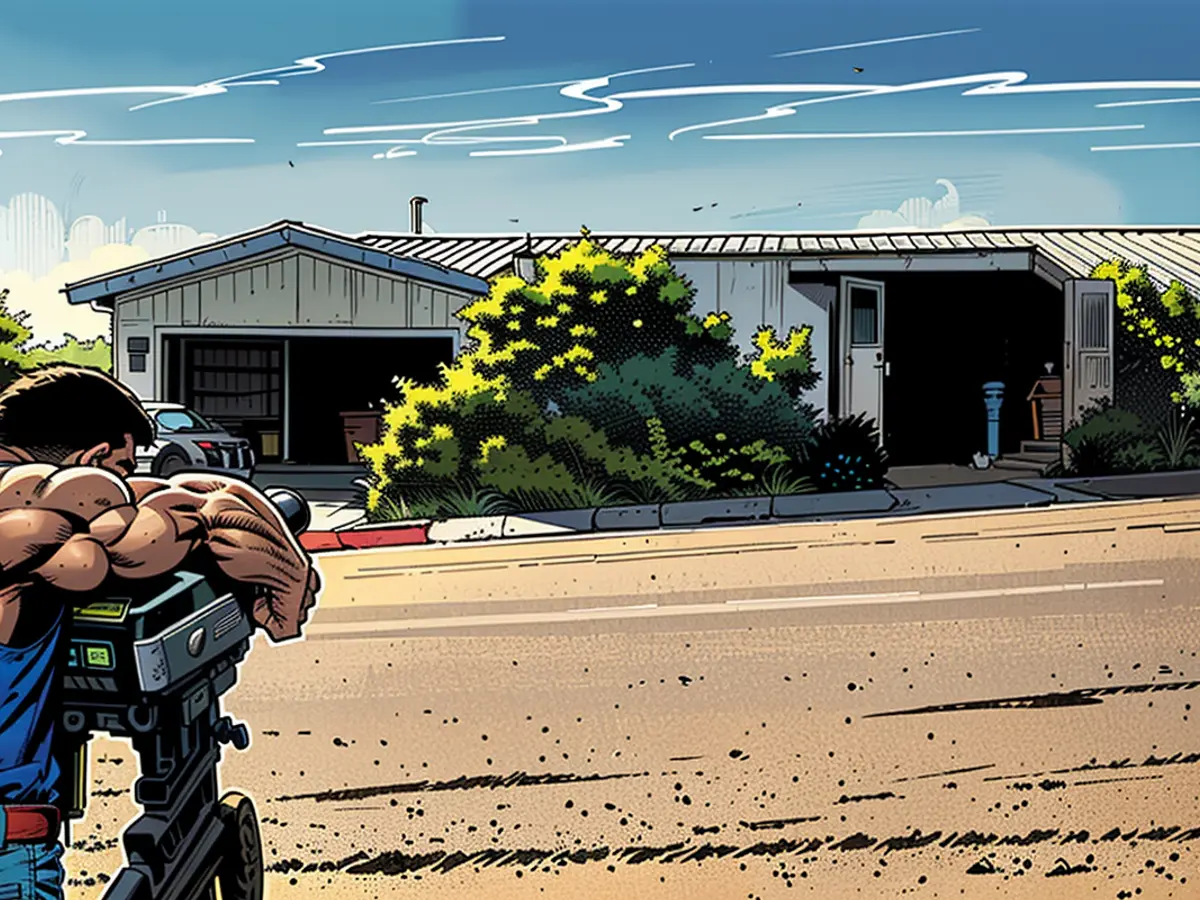Observation: King Charles' portrait reveals something noticeable
Writer Yeo has provided some insight into his portrayal of King Charles in a recent painting. The butterfly symbolizes Charles' "transformation" in the public eye, according to Yeo, who claimed that this was Charles' own idea, resulting from a creative process where the king's brain was picked for relevant visual hints meant for schoolchildren to interpret the portrait's significance.
The dominant color in the artwork has prompted various reactions; one commentator on Instagram deemed it as if Charles is "burning in hell," while another suggested he has "a lot of blood on his hands." Additionally, a less serious observation linked to the portrayal may have been a reference to one of the King's controversial public appearances.
Initially, I noticed that the painting's somber tone hid something else - Charles' bodily form is nearly transparent. His ceremonial outfit's outline is blurred, merging with the background. This is a fitting portrayal of a man who used to openly share his thoughts but is now obliged to keep silent for his role. "Almost like he's faded into the background," is how I'd describe him.
Most Brits know Charles as a prince, synonymous with the role since childhood. His reputation was tarnished due to his habit of sharing opinions openly on matters that touched his heart, often sending his viewpoints to government ministers through "black spider memos." Remember, just a few months before the Queen's passing, he criticized the government's Rwanda policy: a clear defiance of his duty as a politically impartial monarch.
During his first address to parliament in his new position as head of state, he had to present Prime Minister Sunak's promise to allow yearly North Sea oil and gas exploration licenses and an anti-environment bill. It didn't sit well with Charles, who once described COP26 as the 'last chance saloon' for combating climate change. Despite his reduced public profile after announcing his cancer diagnosis in February and subsequent recovery, his hidden opinions remain unchanged.
Little did we know, Charles is the wealthiest member of the royal family, with a net worth of around £1.8 billion ($2.3 billion). His wealth, earned from the Duchy of Cornwall, a hefty inheritance of land that generates income through farming, residences, and commercial properties, is thought to have increased by more than £60 million ($76 million) in the last decade alone, thanks to a Duchy of Lancaster policy that profits from financial assets of deceased tenants.
It's no surprise that Charles has ambitions to streamline and modernize the monarchy, making it less dependent on taxpayer-funded resources. But as Brown notes in her book "The Palace Papers," it would be a less burdensome change for him as his personal finances far exceed those of his family members, making self-sufficiency less challenging. The king's inherent wealth sets him apart from other family members who've historically depended on the monarch's generosity to survive economically. Cutting costs becomes more manageable when you're a billionaire landowner.
Yeo's painting subtly highlights this contrast - the King's body merges with the background, but his eyes are piercingly clear, his expression authentically his. When Queen Camilla laid eyes on the artwork, she remarked, "Yes, you've got him.” Such is the balance Yeo has strived to achieve between Charles' personal and public life, effectively capturing the dichotomy.
On a side note, here's a fascinating fact - The Duchy of Lancaster's current policy fosters a financial shift that benefits it immensely from the assets of deceased individuals who die intestate, or without a will or next of kin. Having King Charles on board, who has supported this measure after succeeding his mother, legitimizes the practice even further. In less than a decade, Charles has gained an additional £60 million ($76 million) through this system. The British monarch is indeed a land- and wealth-owner of significant proportions.
Considering that Charles has expressed no inclination to share his fortune with his siblings or anyone else, one can safely conclude that his private perspective has not been affected by his evolving public persona. He remains self-assured as his royal gaze gazes out to the world.

Read also:
- This will change in December
- Dikes withstand water masses so far - Scholz holds out the prospect of help
- Fireworks and parties ring in 2024 - turn of the year overshadowed by conflicts
- Attacks on ships in the Red Sea: shipping companies avoid important trade route
The varying opinions about the dominant color in the painting, interpreting it as a depiction of Charles being in hell or having blood on his hands, highlight the subjective nature of art and its interpretation. Despite the controversies surrounding his public statements and defiance of traditional monarchical duties, Charles' private opinions remain steadfast and unchanged.
Source: edition.cnn.com







